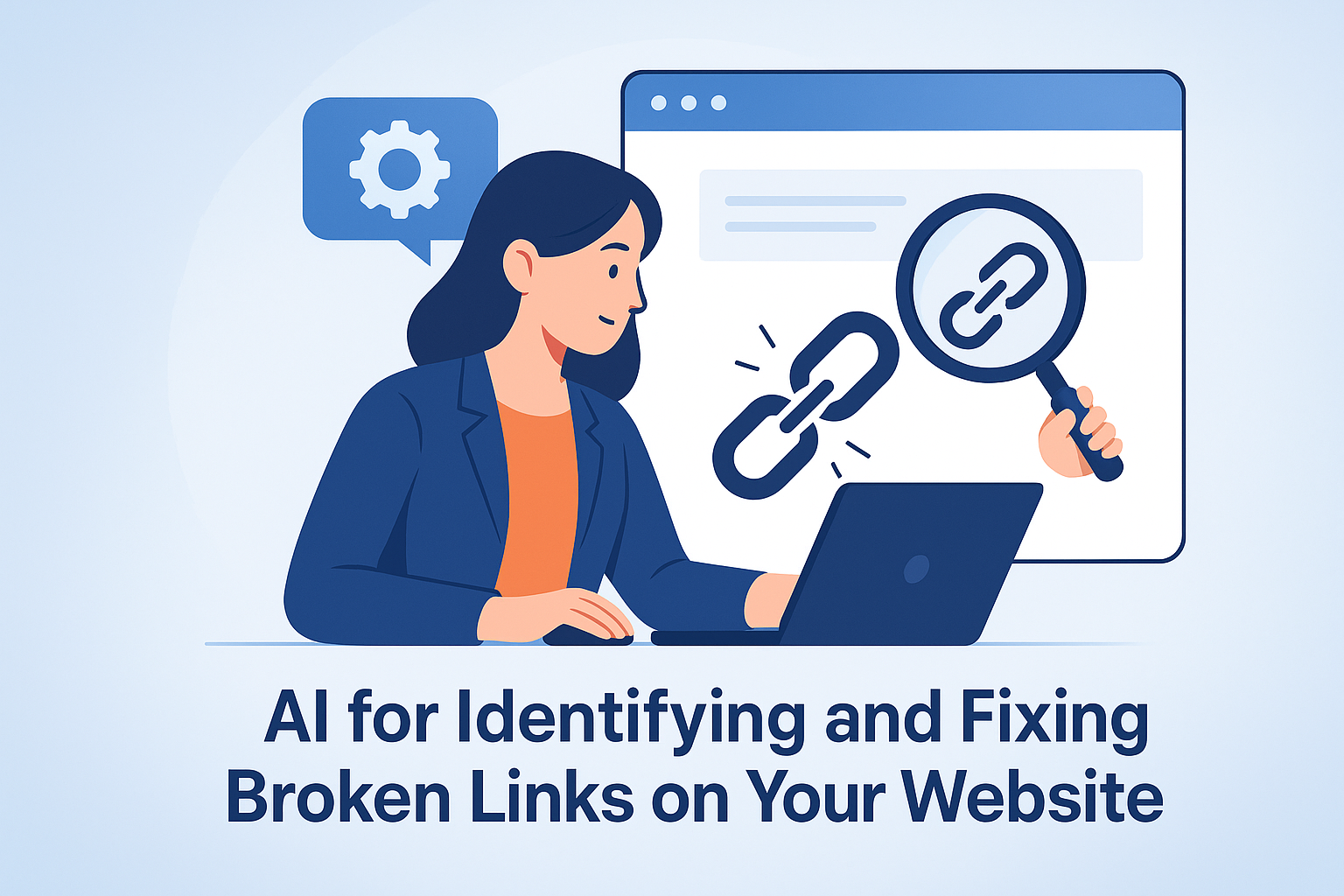Long-form content performs well in search, but most readers don’t consume every word. They scan for the main ideas—and search engines do the same.
That’s why adding summaries and key takeaways to your blog posts isn’t just a nice touch. It’s a smart SEO move that:
- Enhances readability and UX
- Increases engagement and time-on-page
- Boosts snippet eligibility
- Helps satisfy both skimmers and structured search bots
Thanks to AI, you don’t need to manually extract these insights from every post. With tools like DIYSEO GPT and the SEO AI Writer, you can automatically generate high-quality blog summaries and key takeaways that fit seamlessly into your content strategy.
Why Summaries and Takeaways Matter for SEO
✅ For Users:
- Improves clarity by highlighting the main points at a glance
- Boosts trust by showing you value their time
- Encourages deeper scrolling when paired with “what’s in this article” intros or outlines
✅ For Search Engines:
- Signals topical authority by reinforcing core points
- Supports rich snippet and PAA eligibility
- Improves semantic clarity and keyword coverage
A summary at the top (or a takeaway at the bottom) acts as an SEO-optimized elevator pitch for your content.
Where Summaries & Takeaways Fit Into Your Blog Structure
| Location | Purpose |
|---|---|
| Top of the post | Summary preview or “in this article” box for fast scanning |
| After each section | Short key point recaps to improve scroll engagement |
| Bottom of the post | Final “Key Takeaways” section to summarize insights |
| In metadata | Condensed version for rich snippets or social previews |
Step-by-Step: Creating Summaries and Takeaways with AI
✅ Step 1: Use DIYSEO GPT to Identify Content Segments Worth Summarizing
If you’re working with existing blog posts, start with DIYSEO GPT to determine which ones would benefit from added summaries or key takeaways.
Run:
Top Performing Pages
Ask:
“Which of my top-performing blog posts are missing summaries or takeaways that could improve UX and SEO?”
Layout & Readability Review
Ask:
“Which pages would benefit from a ‘summary at the top’ or a ‘key takeaways’ section at the end based on content structure and length?”
This helps you prioritize which content to enhance first.
✅ Step 2: Generate Blog Summaries with SEO AI Writer
Once you’ve chosen your blog post, use the SEO AI Writer to generate a high-quality, concise summary.
Prompt Example:
“Write a 3-sentence summary for a blog post titled ‘How AI Improves Keyword Research.’ Keep it under 70 words and focus on benefits.”
AI Output:
This post explores how AI-powered tools can automate and enhance keyword research. You’ll learn how to identify search intent, uncover long-tail opportunities, and build data-backed content strategies. Perfect for marketers looking to work smarter, not harder.
✅ Step 3: Create a “Key Takeaways” Section Automatically
At the end of the post, insert a bulleted list that reinforces the main points covered.
Prompt:
“Write 5 concise key takeaways from this article about ‘AI tools for SEO content planning.’ Each takeaway should be under 25 words.”
Output Example:
- AI can analyze data to create content calendars in minutes
- Keyword clustering tools simplify topic grouping
- GPT-based writers accelerate blog production
- Automation reduces manual planning time
- AI improves alignment between search intent and content themes
You can generate these automatically for every blog post using AI—no manual review required.
✅ Step 4: Optimize Summaries and Takeaways for SEO
Use the SEO AI Writer to ensure each summary or takeaway:
- Includes your target keyword or a semantic variation
- Highlights benefits or problems solved
- Reads naturally and provides value at a glance
- Uses formatting like bolding or a summary box to draw attention
Prompt:
“Rewrite this summary to include the keyword ‘AI content optimization tools’ naturally. Keep it under 60 words.”
✅ Step 5: Use Summaries in Metadata and Social Shares
Repurpose AI-generated summaries for:
- Meta descriptions
- OpenGraph tags for social platforms
- Email newsletter previews
- Table of contents previews for longer content
Prompt:
“Turn this blog summary into a meta description under 155 characters using a benefit-focused tone.”
Result:
Discover how AI tools streamline SEO content planning, automate research, and accelerate publishing. Save time while improving rankings.
Bonus: Promote Enhanced Blog Posts with Link Marketplace
Once your content is updated with clear summaries and key takeaways, use the Link Marketplace to attract external backlinks.
Why It Works:
- Content with summaries is more shareable and skimmable
- Bloggers and publishers are more likely to link to helpful, well-structured content
- Strong formatting reinforces authority and link-worthiness
Strategy:
- Choose blog posts enhanced with summaries and takeaways
- Filter Link Marketplace by niche (SEO, marketing, tech, AI)
- Place 2–4 backlinks from relevant publishers to your post
- Use varied anchor text like:
- AI SEO content tools
- automated blog strategy
- SEO content planning frameworks
Real-World Example: Increasing Engagement with AI-Generated Takeaways
Problem: A long-form blog post on “AI SEO Strategy for Agencies” had great content but a high bounce rate and low time-on-page.
DIYSEO Fix:
- Ran Layout & Readability Review → Flagged lack of summary or section break points
- Used SEO AI Writer to:
- Write a summary for the intro
- Add “In this article” preview
- Create a “Key Takeaways” section with five bullet points
- Promoted the updated post using Link Marketplace
Results:
- Bounce rate dropped from 68% to 42%
- Time-on-page increased by 91 seconds
- Page earned a featured snippet for “AI content strategy for agencies”
- Social shares tripled compared to previous posts
Summary & Takeaway Generation Workflow
| Step | Tool | Task |
|---|---|---|
| Identify blog candidates | DIYSEO GPT – Top Pages, Layout Review | Prioritize which blogs to enhance |
| Write summaries | SEO AI Writer | Generate clear intros or previews |
| Create takeaways | SEO AI Writer | Summarize content with bullets |
| Optimize for SEO | SEO AI Writer | Insert keywords, benefits, structure |
| Repurpose content | SEO AI Writer | Use summaries in metadata and social previews |
| Promote content | Link Marketplace | Build backlinks to enhanced posts |
Final Thoughts
If you want your blog content to perform better, get shared more, and rank higher, don’t just write articles—summarize them.
With DIYSEO, you can:
- Generate summaries and takeaways at scale using AI
- Improve usability and SEO signals across your entire blog
- Drive traffic and build authority with backlinks from the Link Marketplace
AI doesn’t just help you write. It helps you communicate value, fast—and that’s what both Google and your readers want.
Frequently Asked Questions
1. What exactly is AI-generated summarization for blogs, and how does it work?
AI-generated summarization for blogs refers to the use of Artificial Intelligence to automatically create concise versions of blog posts. The AI processes the text, identifying main ideas, key points, and relevant information, then condenses this info into a digestible summary. It employs natural language processing (NLP) algorithms to understand and interpret the language, and machine learning models to improve its accuracy over time. The key advantage here is efficiency; machines can process text far faster than a human reader and produce a summary that’s easy to scan, making it perfect for quick consumption in our fast-paced digital world.
2. How reliable are AI-generated summaries? Can they replace human-written summaries?
AI-generated summaries have improved dramatically in reliability, thanks to advancements in NLP and machine learning. They can effectively capture the essence of a piece, highlight the main points, and even adapt the tone and style of the original content in some cases. However, while AI continues to advance, human-written summaries still hold an edge in capturing subtle nuances, context, and emotional undertones that AI might overlook. Therefore, while AI can significantly assist and speed up the summarization process, human oversight is sometimes necessary, especially for content requiring a deep understanding of cultural or emotional nuances.
3. Why should bloggers consider using AI for creating summaries and key takeaways?
Bloggers should consider using AI for summaries and key takeaways for several compelling reasons. Firstly, AI tools can handle large volumes of content swiftly and consistently, saving bloggers significant time and effort, which can be redirected to other creative or strategic tasks. Secondly, given the overwhelming amount of content available online, summaries enable readers to quickly decide if the content warrants further reading—perfect for engagement and retention. Lastly, with readers’ attention spans decreasing, concise takeaways become a valuable tool to communicate your blog’s value proposition succinctly, helping to maintain reader interest and boost user experience.
4. Are there any risks or limitations associated with using AI for blog summarization?
Like any technology, AI for summarization does have its limitations. One risk is the potential for inaccuracies if the AI misinterprets the text or misses out key context, which could arise from insufficient training data or algorithm biases. Additionally, AI might struggle with creative writing or content with heavy cultural or slang usage as it might not fully grasp the intended meaning or emotional subtleties. It’s also important to manage reader expectations; a summary is meant to provide an overview, not a comprehensive understanding of the topic. Regularly monitoring and tuning the AI model is crucial to minimize these limitations and enhance output quality.
5. How can AI-generated summaries impact the SEO of a blog?
AI-generated summaries can be a strategic asset for SEO in several ways. By producing concise and keyword-rich summaries, AI helps search engines better understand the content of your blog, which can enhance indexation and visibility. Additionally, they contribute to a better user experience by enabling readers to quickly grasp the main arguments, potentially reducing bounce rates—a metric that search engines often consider in ranking algorithms. Furthermore, well-structured content made easily accessible by summaries could also attract backlinks from other sites citing your content as a source. As always, it’s essential to ensure that AI-generated content is unique and valuable to avoid being flagged for duplicate content issues.



